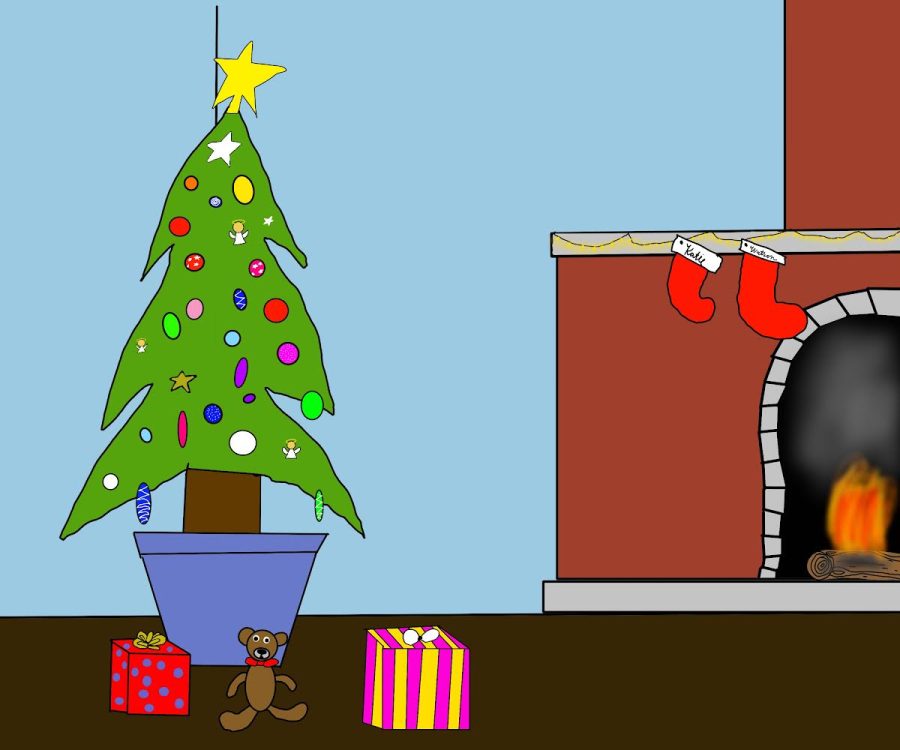Classic Christmas traditions bring joy to the world
The holiday season conjures up all kinds of delightful images associated with wintertime. Christmas trees standing tall and wrapped in lights and decorated with ornaments, exchanging gifts with friends and family, and most importantly, jolly Santa Claus delivering presents to eager children worldwide.
Christmas holds a special place in everyone’s hearts, especially observing Christians who celebrate the birth of Jesus Christ on Christmas. Strangely, however, Jesus was never born on Christmas. Traditionally, theologists claim that he was born during the spring. The beloved holiday of Christmas has roots in pagan cultures across Europe, long before the Nativity (birth of Jesus Christ). In Scandinavia, for example, the holiday of Yule was celebrated. Yule was a celebration of the winter solstice, starting on the 21st of December and ending in late January. Yule traditions include the Burning of the Yule Log, which marked the beginning of festivities and it is said that it would feed the fire all through the 12 days of Christmas. Although it makes sense to call celebrations for religious reasons during this time, some practicality is involved as well. During the end of December, most alcoholic beverages had finally completed fermentation and were ready to drink, and most livestock animals were slaughtered.
Meanwhile, in the southern area of Europe, the Romans celebrated the holiday of Saturnalia, a holiday celebrating the god of agriculture, Saturn. Schools and businesses would close during this holiday, allowing all to enjoy the festivities. Even individuals who the Romans enslaved were given temporary freedom and were also allowed to participate in celebrations. Saturnalia had been described as “the best of times” by the Roman poet Catullus. Saturnalia is a source of one famous Christmas tradition: using wreaths to decorate your home. Romans would decorate their homes with greenery and especially wreaths to celebrate. They would also exchange gifts with each other.
During the 4th century, Christian churches began to celebrate Christmas on the 25th of December. The holiday timing allowed the Christian holiday to assimilate with traditional solstice holidays such as Saturnalia and Yule. By doing this, the church hoped that it would replace pagan religions.
This wish came true during the Middle Ages, when Christianity became Europe’s dominant religion, and Christmas ultimately replaced traditional holidays and religions. Christianity saw an enormous spike in followers during this time.
An icon of Christmas recognizable anywhere is Santa Claus. Most think of Santa Claus as the jolly man clad in red, delivering toys to children near and far. However, Santa’s origins begin in the 3rd century in modern-day Turkey, then part of the Roman Empire. St. Nicholas was extremely generous, and it is said that he sold the wealth he had inherited from his uncle. From then on, he traveled from town to town, assisting the needy and sick.
Although not much is known about his life, St. Nicholas had become one of the most famous saints by the time the Renaissance began and was considered the patron saint of children and sailors. Eventually, his fame spread to northern areas of Europe. In the Netherlands, St. Nicholas was referred to as Sinterklaas. The Netherlands is also where the popular depiction of Santa Claus comes from. The name “Santa Claus” is essentially a different spelling of “Sinterklaas.”
Stories of Santa on his sleigh led by reindeer originate from an American poet Clement Clark, who wrote “A Visit from Saint Nicholas,” but most know it as “Twas The Night Before Christmas.” This poem, published in 1822, truly made Santa Claus famous in North America and, ultimately, all around the globe.
Of course, Christmas would not be Christmas without a Christmas tree. Many myths surround the hazy origins of the trees, ranging from that they represent the goodness of God to that St. Boniface stopped a human sacrifice beneath an oak tree by cutting it down. However, Christmas Trees had truly originated in Germany around the early 15th century. In a German city, an evergreen tree decorated with various fruits and other common items was used to represent the tree of knowledge from the book of Genesis. The act of taking a Christmas tree indoors came a few centuries later. The demand for these trees was so high that in the city of Strasbourg, laws were passed to prevent people from cutting down more trees and even limiting them to one tree per household. Even centuries later, the Christmas tree remains a symbol of life and joy around the world.
Your donation will support the student journalists of Saint Viator High School. Your contribution will allow us to purchase equipment and cover our annual website hosting costs.








